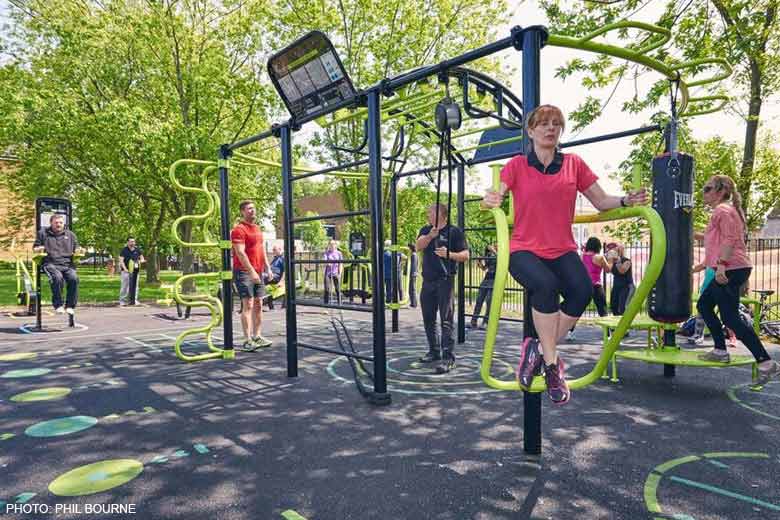
Of the four risk factors for NCDs, physical activity (PA) receives the least attention and programmes aimed at reducing inactivity are woefully insufficient or altogether absent. The 2012 Lancet series on physical activity concluded that ‘physical inactivity is as important a modifiable risk factor for chronic diseases as obesity and tobacco’ supporting the need for greater focus on interventions supportive of increasing active lifestyles and reducing sedentary behaviours. The recent 2016 follow up Lancet series, Physical Activity 2016: Progress and Challenges, underscores that interventions aimed at increasing physical activity have tremendous potential for the prevention of NCDs and dementia.
Despite this we continue struggle with recorded national levels of physical activity falling pathetically short of national and global targets. Target 3 of The WHO Global Monitoring Framework for NCDs calls for a 10% relative reduction in prevalence of insufficient physical activity by 2025. Yet we know from national studies across the region and the Global School-based Student Health Survey (GSHS) that PA levels among adults and children are well below the WHO recommended levels. The Barbados Health of the Nation study found that 1 in 4 adults report no recreational activity at all in the past month. The 2011 GSHS reported that less than one-third of students who were physically active for a total of at least 60 minutes per day on five or more days during the past seven days and only one-third attended physical education (PE) class on three or more days each week during the school year. The GSHS data for young people across the Caribbean is quite similar to Barbados. The sky rocketing rates of overweight and obesity and point to a crisis of inactivity warranting urgent population level interventions.
Encouraging people to be active in their leisure time is therefore a regional and national priority here in Barbados. We need to offer more attractive options, so that people want to be active in their free time, and adult playgrounds are great way to do this.
Adult playgrounds take advantage of our warm climate, help to get people outdoors, and the fun aspect of this idea may help to counter some of the psychological barriers to starting and maintaining a physical activity regimen. If combined with children’s play areas, families would be able to exercise and have fun together. This would help get children accustomed to regular exercise as a form of recreation, as well as get some currently inactive adults moving.
We know that Barbados not only has a problem with a lack of physical activity, but also of perception: many people simply don’t recognise the need to be active. An eye-catching and exciting scheme like this will get people talking and thinking about exercise in a new way, and may well help to change attitudes within society as a whole.
The article mentions the initial costs for a variety of similar schemes, but it is just as important to look at the lifetime cost of such a space. The health benefits that would result from installing an adult playground accrue only over time; it is not enough simply to install it, the space and the equipment need to continue to be in good condition in order to get people coming back regularly. Funding would therefore need to come from those with a stake in the long term health of Barbadians.
Ideas such as this fit into a wider context of improving the quality of, and access to, recreational spaces. The updated Physical Development Plan for Barbados, to be released in early 2017, will map outdoor recreational areas across the island, and will allow us to identify whether there are areas in Barbados with poor access to recreational spaces. We also plan to examine how Barbadians interact with recreational spaces, with the aim of identifying opportunities for improving them that are tailored to our setting.
Scaling up of physical activity interventions requires a broad multisectoral approach in which all sectors of government are involved in partnership with civil society and the private sector. There is a need for an increase in all forms of physical activity including recreational, in the workplace, domestic and as a means of personal transport. The ongoing role of civil society organisations such as the NCD Alliance, International Society for Physical Activity and Health (ISPAH) and the HCC will be to advocate for strengthened surveillance to inform the development and implementation of improved and innovative policies, programmes, systems, and places to enable Caribbean people to engage in more active lives.

Christina Howitt, Lecturer in Data Science, Chronic Disease Research Centre, UWI
HCC Physical Activity Advisor
For more on interventions to reduce physical inactivity, check out the 2016 Lancet Series: Physical Activity 2016: Progress and Challenges.
Read the Bangkok Declaration on Physical Activity for Global Health and Sustainable Development here.
